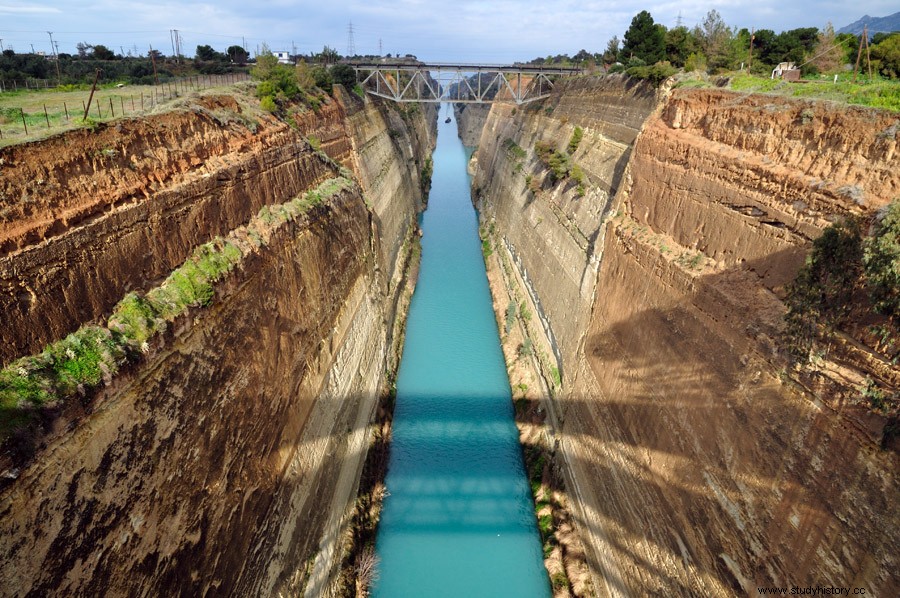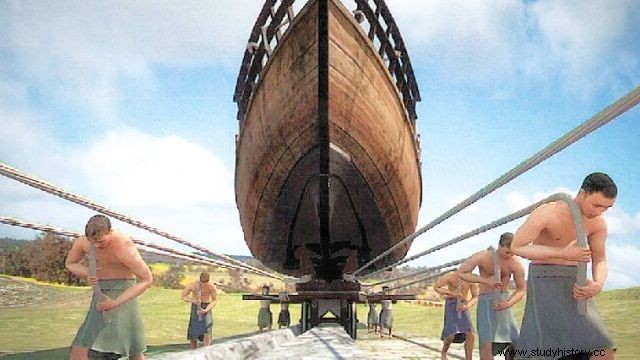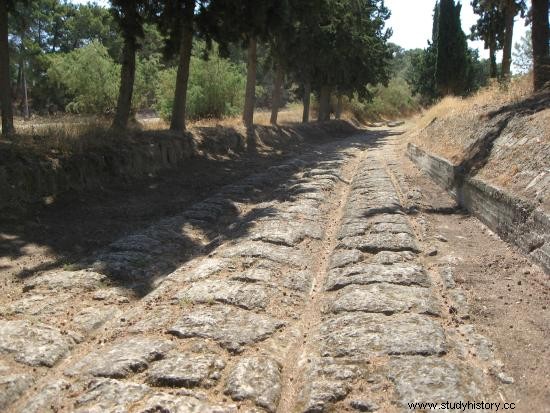Although the ideas and projects for the construction of navigation channels that would join seas or oceans to reduce costs and time in maritime transport were already studied in antiquity, it was not until the 19th century (Suez, Corinth, Panama...) when the engineering made them come true. But in this specific case, that of Corinth, they already tried to find a solution in the 7th century BC
The current Corinth Canal, built between 1881 and 1893, is an artificial waterway of about six kilometers that joins the Ionian Sea with the Aegean Sea through the Isthmus of Corinth.

But if we move to the seventh century B.C. the ships had to circumnavigate the entire Peloponnese peninsula with the addition of being a very dangerous area due to the rocky coastline. So, Periandro , tyrant of Corinth, sought a solution that would make transport between the Ionian Sea and the Aegean cheaper, faster and less dangerous… the diolkos . The diolkos consisted of a land route that crossed the isthmus at the narrowest point to join both seas. A six-kilometre paved limestone causeway was built with a width of ten meters in the part that emptied into the seas and between three and a half and six meters in the intermediate sections. In addition, and like train rails, it had two parallel grooves at a distance of one and a half meters from each other along the entire length of the diolkos. In these grooves the wheels of some wooden platforms drawn by animals were fitted, in which the boats were transported without the load.

In practice, it would be as follows:the ship arrived at the beginning of the causeway, there all the cargo that would be transported in cars along the traditional routes to the opposite end of the causeway was unloaded; the ship would get on the platform that, as if it were a train, would cross the isthmus where it would pick up the cargo and continue by sea towards its destination.
This road continued to be used until the 1st century, when Emperor Nero planned the construction of a canal that was left in borage water, but which, coincidentally, ran through the same place as the current canal and parallel to the old diolkos.

